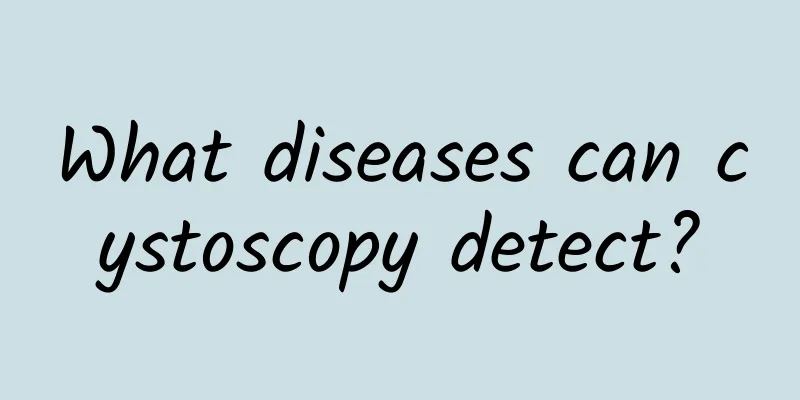What diseases can cystoscopy detect?

|
Cystoscopy is a relatively common examination method. It is a type of endoscope and is part of modern medicine. Through cystoscopic examination, the interior of the bladder can be fully diagnosed. It has a good examination effect on cystitis, stones, obstructive urinary tract diseases, or polyps and tumors. When performing cystoscopic examination, you must be aware of some precautions and strictly follow the operating specifications to avoid nosocomial infection. What diseases can cystoscopy detect? Female urinary fistula, interstitial cystitis, bladder neck contracture, pediatric urolithiasis, pediatric ureteral prolapse, obstructive urinary tract disease, chyluria, prostatic cyst, nematode disease, female bladder neck obstruction Frequent urination, red and astringent urine, painless hematuria, hypertrophic nodules and fibrous tissue hyperplasia, penis-like urethra, shrunken and hardened prostate, pain in the bladder area before and after urination, funnel-like changes in the internal urethra, thinning or interrupted urine flow, and no detrusor reflexes Precautions (1) The urethra and bladder should not be examined when they are in the acute inflammatory stage, as this may cause the inflammation to spread. In addition, acute inflammation of the bladder may cause congestion and make it difficult to distinguish the lesions. (2) If the bladder capacity is too small, below 60 ml, it indicates that the disease is serious and most patients cannot tolerate this examination, which can also easily lead to bladder rupture. (3) Patients who cannot insert a cystoscope due to phimosis, urethral stenosis, or urethral calculi. (4) Patients with bone and joint deformities who cannot adopt the lithotomy position. (5) Women who are menstruating or pregnant for more than 3 months. (6) Patients with severely impaired renal function, signs of uremia, hypertension, and poor heart function. Taboos before examination: The operator should wash hands, wear sterilized clothes and sterilized gloves. The principle of aseptic operation should be emphasized to avoid complications such as nosocomial urinary tract infection. Requirements after examination: (1) Hematuria often occurs after cystoscopy, which is caused by damage to the mucosa during the operation and usually stops after 3-5 days. (2) If there is burning pain in the urethra after surgery, the patient can be asked to drink more water to promote diuresis and given analgesics. The pain will be relieved after 1-2 days. (3) If the aseptic operation is not strict, urinary tract infection, fever and low back pain may occur after the operation, which should be controlled with antibiotics. |
<<: Benefits of dredging the bladder meridian
>>: Why do I have frequent urination and painful urination after bladder instillation?
Recommend
What is the cause of red and yellow urine?
In life, we often see some male friends go to the...
Which part of the foot is better to stick on?
There are many acupoints on the human body, espec...
Chronic pharyngitis
When it comes to chronic pharyngitis, many people...
How to treat white spots on legs?
The human skin is the outermost layer of the huma...
Things to note the day before glucose tolerance test
Glucose tolerance is a relatively common examinat...
Fallopian tube reflexology area
We all know that there are many acupuncture point...
Can pregnant women drink Pu'er tea?
Pu'er tea is made from large-leaf tea from Yu...
Is Traditional Chinese Medicine effective in treating thyroid nodules?
When people reach middle age, various functions o...
My neck feels a bit swollen
Neck problems are social in nature. Many people a...
What are the white spots on my upper lip?
Sometimes when we look in the mirror, we find som...
What are the fastest massage methods to induce menstruation?
Menstruation has always been a problem that has t...
What are the symptoms of kidney stones?
Many people often suffer from kidney stones in th...
Causes of M-type hair loss
M-type hair loss, commonly known as baldness, mai...
What are the Chinese medicine stomach-nourishing teas?
Everyone knows that the stomach is one of the mos...
What are the benefits of anti-slip pads for glasses
In life, for people who wear glasses, they may we...









